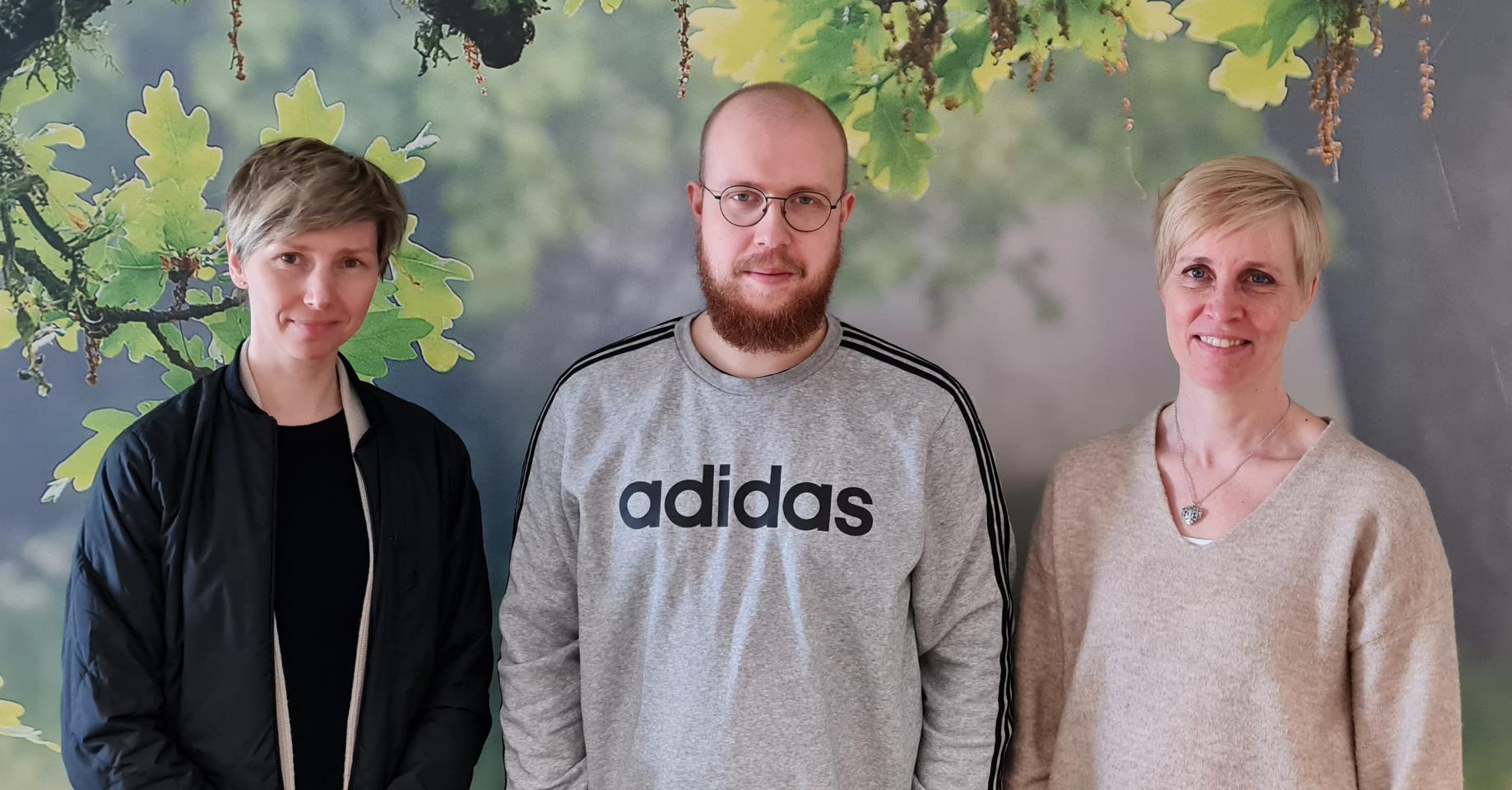Physicians Heikki Peura and Jenni Wennervirta are Data Analysts in the IT Management of Helsinki University Hospital, working in close collaboration on the AI Head Analysis project under the CleverHealth Network. This globally ground-breaking project develops algorithms for head area imaging, which are anticipated to offer new tools for physicians for the diagnostics of different types of cerebral hemorrhage.
In 2018, about 180,000 computed tomography scans (CT) were taken in Finland and the numbers are on the increase. CT scans can currently be performed even in smaller hospitals, but their immediate evaluation is not always possible. For example, in the emergency room, it is not always possible to get the radiologist to examine the CT scans as quickly as needed. At worst, the treatment may be delayed by hours if the cerebral hemorrhage is not immediately detected. The AI Head Analysis project aims to harness Artificial Intelligence to create a tool that supports physicians in their decision-making.
Sharing the passion for combining clinical work with AI research
Heikki Peura is working at HUS IT Management as Data Analyst, and currently works on his Ph.D. for the neurosurgery. In his AI Head Analysis research, he delves into head imaging algorithms together with his colleagues and partner companies CGI and Planmeca. A talented self-learned programmer, Heikki is in charge of the development of HUS algorithms whilst CGI and Planmeca develop their own algorithms to help detect different brain hemorrhages in head CT scans. What makes this project unique is that the total of 15 algorithms developed by these three partners will eventually be combined into one algorithm package which will help to detect a number of different cerebral hemorrhage types.
Heikki is driven by his work at the emergency room where he sees in practice the increasing needs for new tools to smoothen the daily work. He says: “Artificial intelligence is now making its way to hospitals and this is what drives me forward. The indicators gained from clinical work can now be applied in the use of AI in many situations.” Heikki hopes that in the future, AI solutions in hospitals will become as common as blood pressure devices, for instance. At the same time, more time will be released for the patients.
Jenni Wennervirta knows Heikki from the medical school and they work as a team in the AI Head Analysis project. Jenni shares Heikki’s passion to combine physician’s work to software technologies. They are both looking for ways to support clinical patient care in their research. A Data Analyst at HUS IT Management, Jenni has been working for about a year on her Ph.D. related to AI at the department of neurosurgery. Before continuing her medical studies, Jenni worked for about 15 years in international software houses, so both Heikki and Jenni possess the multidisciplinary know-how to support the project objectives.
- Jenni says: ”As I make my rounds in hospitals, I sometimes notice many instances where AI applications could be useful. I am so motivated and thankful that we can do something so unique among the first in the world and have a chance to try out our hypotheses.” Jenni gives a big hand to Heikki: ”It is truly remarkable that the algorithm developed by Heikki and the company partners can be used to reliably detect a cerebral hemorrhage in a head CT scan — the hemorrhage can be so small that it is impossible to see with a naked eye.”
Acting as interpreters between experts from different fields
Taru Hermens is acting as the Project Manager for the AI Head Analysis project. Before joining HUS IT Management, she worked as a nurse at the emergency room, which makes her a multi-skilled expert who combines clinical experience to IT. Taru’s wide contact network and ability to make the daily work run smoothly and keep the communication flowing between different stakeholders is an essential part to keep the project in motion.
Taru considers Heikki’s and Jenni’s strong AI-understanding as an important asset to the project. It brings about good results to collaborative development work and is a way to guide the partner companies towards the right direction.
- Taru points out: ”Different stakeholders do not always speak the same language, so Heikki and Jenni are kind of interpreters in the discussions between HUS experts and partner companies. When the common ground and understanding is established, the project runs smoothly.”
Physician’s toolbox: enter algorithm
The goal of the AI Head Analysis project is to bring the algorithm package developed in the project to the clinical environment and introduce it as a part of physicians set of tools. The clinical testing environment is currently being built so the tests can be launched in authentic environment in the background of daily patient care.
While the project looks for hospitals for piloting, there will be a chance to spread a wider understanding on the benefits and opportunities of AI solutions for imaging. The solutions are meant to support the physician’s decision-making process in the detection of cerebral hemorrhages. Jenni reminds that similar algorithms can also be harnessed to detect brain tumours, for instance. Such solutions are in great demand both in Finland and abroad — in the future, considerable international markets await the commercial solutions.
More information
Project Manager Taru Hermens, taru.hermens[at]hus.fi

